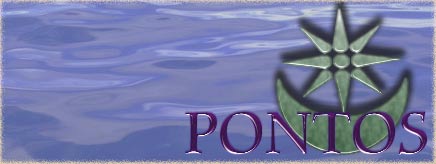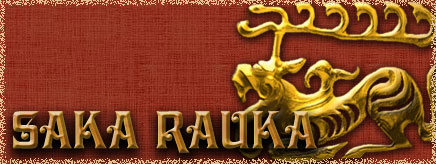
Originally Posted by
NightwindKing

lol odd place to introduce myself I know, but I thought I'd add-in my two cents (hi, Im new ;-)
Historians tend to agree on Rome's effectiveness/power/strength for a number of reasons...one being their hierarchy/social structure and communications system (roads, prefects, etc...) and another being their cohesive and cookie-cutter military. Not because a perfectly uniform military is best, but because it was best in their time period, for who they fought against.
The Greeks had a similar success. Alexander's forces were famous for their strong cohesian and 'stand together' attitude, which was what allowed them to beat the old-world Persian hordes under Darius II (or was it I?). When the tactics, equipment, and skill of two armies comes down purely to who is more orderly and 'in control', the more unified force will almost always win. It's simple logic.
That said, Rome won its battles primarily because its commanders (when they weren't incompetent morons, obviously) were able to intelligently use their strengths to their advantage. One of the primary strengths was the unification and cohesian of its military forces.
However, as has been said, just because something is uniform doesn't make it great...the cavalry, for example, which sucked. And was uniformly sucky.
The Roman army was designed to be a powerhouse and anvil to swiftly stomp-out rebellion and fractured tribes by virtue of its unification, advanced (for the time) technology, and common tactics. It was made to fight in open, massed battles of two or more large massed forces fighting head-to-head. Rome historically did poorly in defending against ambushes (most armies do, I suppose).
That said, the Japanese army (as an umbrella term) was designed for mountainous forest warfare. The large open massed battles in fields or hills were not nearly as common as ambushes, mountain seiges, and skirmishes. It's why there are so few 'legendary' Japanese battles known outside of Japan...westerners think of amazing battles like Thermopylae (however you spell it), Agincourt, D-Day, etc...whereas for the Daimyo, a larger battle was more costly and, in all likelyhood not as 'worth it' if the gain could be had with lesser forces. Book of Five Rings, for example, makes a huge point that the greatest commander is the one who wins without fighting any battles (echoed in The Art of War).
Samurai were, on a whole, well-trained swordsman. They were as accustomed to fighting in their armor, with their weapons, as the Legionnaires were. The Samurai, though, were used to fighting one-to-one, looking for personal honor. The samurai 'style' of warfare was one of calling-out your opponent, stepping around your allies, and dueling till one was dead, then moving on. HUGE difference from the Roman 'lock shields and stand' model.
So, it would all depend on the type of battle, the intelligence of the commander, etc...
Everyone can agree, I think, that in one-to-one a generic, well-trained armored Samurai would crush a legionnaire handily.
In pitched battle? Since samurai armies were generally largely ashigaru (which really isn't a unit type anyway, just a rank), spear-armed or bow-armed peasants...no doubt well-versed in their weapon, but not hardened lifestyle warriors. I'd say in a mountainous-terrain battle, in Japan, the Japanese would win. They'd know how to get around even the tough Roman front. In an open field in capernum, Rome would likely win. They'd have the experience of such open battles that not even the best Japanese commander would have much of.


















Bookmarks